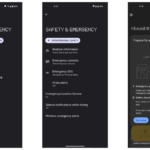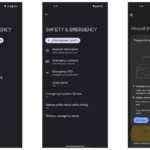Manufacturer customized versions of Android have been a pain for purists since time immemorial. One reason for that is because they end up delaying Android software updates. But despite all the hate that Android gets for this, haven’t these manufacturer tweaked flavors like Samsung’s Grace UX or Xiaomi’s MIUI contributed anything meaningful?
Well, as some of you probably already know, more than what most people think. There is significant evidence to suggest that other than users, Google itself has been a big benefactor of them. Here’s a blow-by-blow account from the most recent version of Android to the one released many years ago. Let’s get dirty with the details, shall we?
Android O
1. Notification Dots
An app badge is a tiny number that shows up above icons, indicating the count of unread notifications. We’ve seen them on iPhones since 2007, but the idea actually predates to BlackBerrys that came before, that instead of a tangible number, had a star symbol above the app icon, denoting there’s something new to see.
App badges on Android date back to phones as old as the first Samsung Galaxy S i9000, which was the first phone to run Samsung’s TouchWiz 3.0 UI based on Android (it also was what Apple used to sue Samsung with). A big chunk of Chinese brands like Xiaomi had app badges in their iterations of Android for a long time now.

Notification Dots being shown off at the Google I/O 2017
This year, Android O officially brings support for notification dots, partly bringing a feature that custom Android phones have had for years now.
2. aptX
Android O also adds support for Bluetooth audio codecs such as aptX and Sony’s LDAC. aptX has been around on phones as old as the Galaxy S3 or the HTC One X from 2012. The first aptX-enabled Android device was, in fact, a tablet — the Samsung Galaxy Tab 7.0 Plus — launched in 2011.

Audio Codec settings on an Android O device
High-quality audio codecs like aptX deliver CD-like music quality wirelessly over Bluetooth, by minimizing any quality loss that typically occurs with a wireless connection. In the post-3.5mm-jack world, this is an important addition that Android will now have by default, no matter which phone you buy (as long as it runs Android O or above).
3. Customizable navigation keys
Hidden in the developer options of Android O, there seems to be a way to add extra buttons to the navigation bar. Sounds familiar? That’s because LG has offered a similar feature to its users from 2013 since the LG G2.

Customizable virtual buttons on an LG G4
Although not as easy to use (and primitive) like LG’s implementation, the System UI Tuner menu lets you add up to two keys on either side of the home, back and multitasking software buttons. These keys can perform a variety of functions, provided you dig through the keycodes on this Android Developer page. The alignment of the nav keys can also be changed from center to either corner of the screen. Considering how big our phones have become over the years, having extra shortcuts sure can come in handy.
Android Nougat
1. Split-screen multitasking
2016’s Android Nougat update brought split-screen multitasking to stock Android among other things. This has been a hallmark feature of Samsung phones since the Galaxy Note 2 in 2012. As the name suggests, it lets users run two apps simultaneously. So, you could be watching a YouTube video on the top half of the screen, while reading tweets on the bottom half (I’m always amazed at the crazy sons of guns who can actually do this).

Left: Multi Window view in Android Nougat. Right: Multi window on a Galaxy S6 running TouchWiz
I’ll admit, Google’s iteration of multi-window is a little more intuitive to use. It should also be supported by more apps, as this is a universal feature that doesn’t just run on some Android phones, but any Android Nougat phone.
Today, Google also forbids manufacturers from tweaking the way multi-window works in the Android Compatibility Definition Document. Meaning, Samsung have been made to forgo their multi-window code in favor of Google’s, for their devices that run Android Nougat.
2. Change text size
Yet another Android Nougat feature that Google advertises on the official page isn’t new — increasing interface size. For one, users of Xiaomi’s MIUI 7 have had the ability to change font sizes across the interface since 2015. Doing so would also change sizes of other UI elements like app icons.

Left: Android Nougat display size change feature. Right: MIUI 7’s text size change feature
3. Doze On The Go
Although not exactly a ripoff — Doze 2.0 on Android Nougat, which improved upon Doze that was originally introduced in Android Marshmallow, can be called the logical successor to Sony’s Stamina mode from 2013.

Dave Burke explaining Android Doze at Google IO
Android phones have always supported true multitasking; meaning apps could run in the background even after you hit the power button and put the phone on standby. A drawback of this feature was that some apps would prevent the phone from going into a ‘deep sleep’ power state, wasting precious battery life by constantly accessing the network for updates.

STAMINA mode on Sony Xperia Android phones
The Stamina mode on Xperia phones used to shut off mobile data for all apps after the phone was put in standby (except for apps you’ve added to a whitelist). Doze On The Go works smartly by being the gatekeeper, only allowing apps to access the internet only once in awhile, and not whenever the app feels like. This way, your apps aren’t completely out of the loop when your phone’s sitting in your pocket, nor are they running amok.
4. Pro Toggling in The Notification Shade
You can also officially rearrange shortcut toggles in the notification drawer in Android Nougat. This has been possible since a long time in many customized flavors of Android, like Samsung’s TouchWiz.

Top: Quick toggles in Android N. Bottom: Quick Toggles in TouchWiz on the Galaxy S6
Speaking of shortcut toggles in the notification drawer, in Android Nougat you can access the first five toggles can be toggled by pulling the notification shade just once, instead of twice in versions before Nougat. TouchWiz has had the same functionality long before Nougat.
5. Camera Gestures
Google briefly put Motorola’s signature double-twist-for-camera gesture in the Nexus 5X and 6P, before abruptly removing it, only to add a very similar gesture in this year’s Google Pixel. The only difference is that instead of switching to camera mode, this gesture switches between the front and back cameras on Pixel phones.
![]()
Left: ‘Moves’ on the Google Pixel running Android Nougat. Right: Moto Actions on Motorola phones.
Android Marshmallow
1. Permissions Management
Now that we’re talking about 2015’s Android Marshmallow, it too borrowed a couple of features from Google’s hardware partners — the biggest one being permissions management, which has been a part of Xiaomi’s MIUI and other brands long before 2015.

App permissions on Android 6.0 Marshmallow
Before Android M, there was no way to prevent apps from accessing things like the camera, microphone, location, local storage, etc after installation. By default, you had to grant the app access to everything it asked for during installation, or choose not to install the app altogether.

The Permissions Manager in MIUI 5
While advanced permissions management has been around since iOS 6 on the iPhone in 2012, some China-based Android phone makers had baked in their own permissions management until Google officially put it in Android M. For example, MIUI 5 has had an elaborate permissions manager since 2014. It could block access to almost everything an app might want to access. It even let users block internet access to apps if they pleased, something Google obviously cannot afford to do.
Android Lollipop
1. Notification Toggles
Toggles within the notification shade itself arrived pretty late to Android — in 2014 with Android Lollipop to be precise. Before that, stock Android users resorted to using popular apps like Power Toggles to get the same functionality. Samsung Android phone owners have been used toggles built into the interface since 2011.
These toggles let users control frequently-used features of the phone — everything from WiFi, Bluetooth, Mobile Hotspot, Do Not Disturb, Mobile Data, and many more things. Although credit’s due to Google for making a very rich toggles experience — for instance, tapping the mobile data icon shows up data consumption right there, without having to open the settings menu. Google eventually also let developers add their own toggles since Android N.
2. Voice Control
Select Android Lollipop devices like the Nexus 6 or Nexus 9 also supported responding to the “Ok Google” hot word for voice commands, even if they were on standby. This ought to ring a bell because Motorola’s first gen Moto X from a year before had the exact same feature.
In fact, 2013’s Moto X and it’s “Ok Google Now” command was such a marquee feature that it eventually inspired Microsoft to add the “Hey Cortana” to its Windows Phones and Apple to add the “Hey Siri” hot word to the iPhone. In fact, a slew of Google products, like Google Home or Android Wear rely on the use of this hot word.
3. Ambient Display
Speaking of other features Google borrowed from Motorola — the phone maker it bought and sold quickly but kept the patents — there’s Ambient display on Nexus devices running Lollipop. It works similar to the always-on ‘Active Display’ on the first Moto X, that too used motion detection to gently light up the screen with notifications whenever it was picked up.
Active Display was later renamed to Moto Display and is still a feature on current Moto devices like the Moto G5 Plus.
Conclusion
Phone makers, in a bid to aggressively compete with each other, keep pushing the envelope with customizing the software on their phones. Although all their creations may not be great — some are certainly good enough for Google to consider implementing them in future versions of Android themselves.
It appears that manufacturer customized versions of Android are probably the best sandbox Google can have, to see what really works, before baking it into core Android.






















